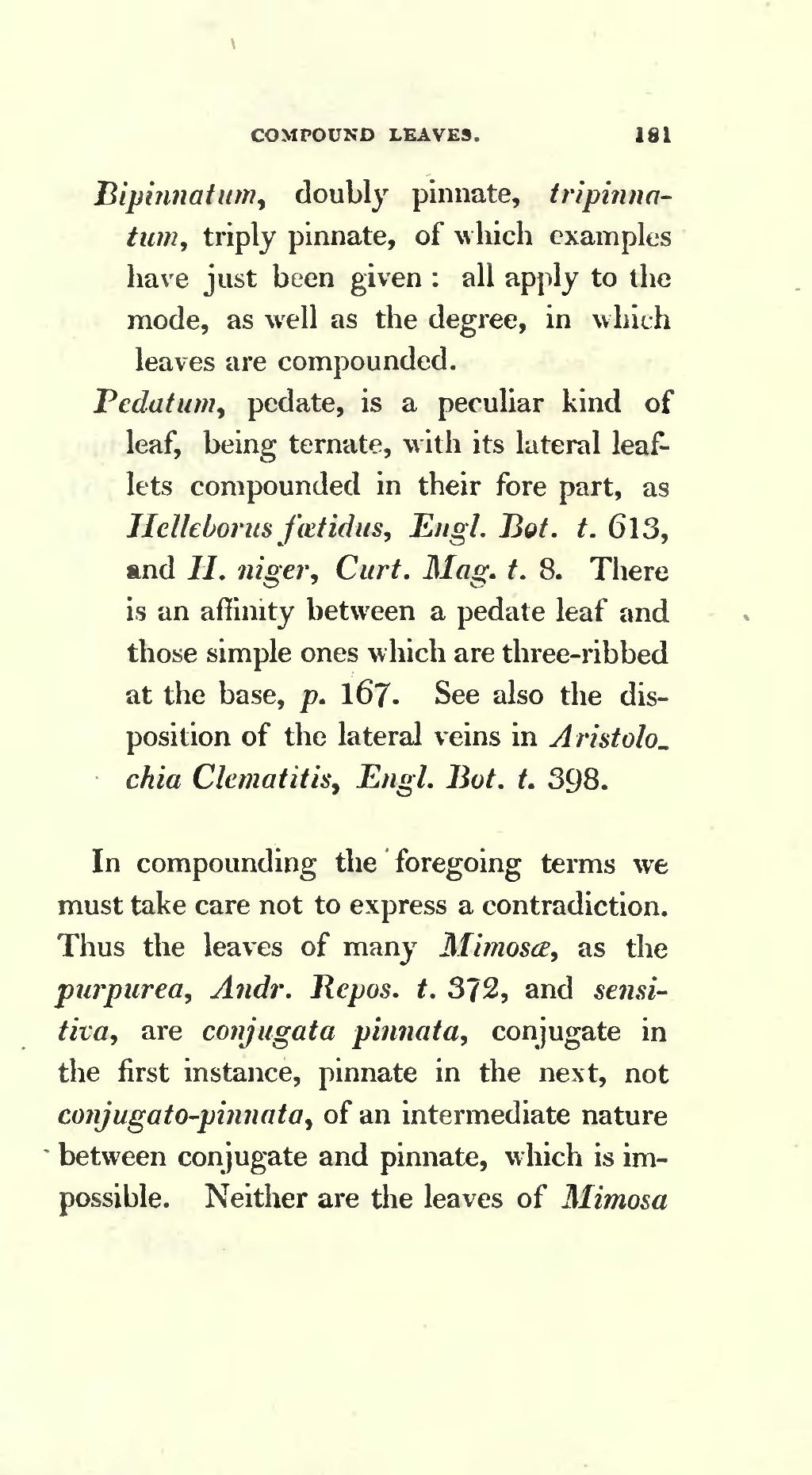Bipinnatum, doubly pinnate, tripinnatum, triply pinnate, of which examples have just been given: all apply to the mode, as well as the degree, in which leaves are compounded.
Pedatum, pedate, is a peculiar kind of leaf, being ternate, with its lateral leaflets compounded in their fore part, as Helleborus fœtidus, Engl. Bot. t. 613, and H. niger, Curt. Mag., t. 8. There is an affinity between a pedate leaf and those simple ones which are three-ribbed at the base, p. 167. See also the disposition of the lateral veins in Aristolochia Clematitis, Engl. Bot. t. 398.
In compounding the foregoing terms we must take care not to express a contradiction. Thus the leaves of many Mimosæ, as the purpurea, Andr. Repos. t. 372, and sensitiva, are conjugate pinnata, conjugate in the first instance, pinnate in the next, not conjugato-pinnata, of an intermediate nature between conjugate and pinnate, which is impossible. Neither are the leaves of Mimosa

